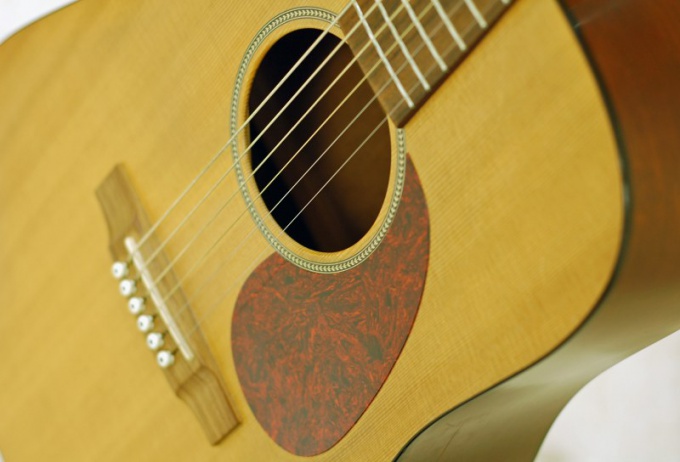You will need
- guitar;
- - set nylon or metal strings.
Instruction
1
To begin, decide what strings to buy and put on is nylon (or a more expensive carbon) or metal. Nylon strings are softer and safer for the hands of a novice musician and instrument. The metal are more resonant and beautiful sound.
2
Selecting and buying the correct kit, proceed to replacement. It is not necessary to unpack at once all the strings , their thickness varies very slightly, and the eyes there is nothing easier than to confuse the order. Carefully loosen the tuning pegs with the old strings on your instrument. If the guitar is has no strings, skip this step.
3
Remove from the guitar first (the thinnest) string. To adjust, loosen it enough so that the coils themselves were removed from the peg, unwind to the end and unhook. Then pull the string out of the hole in the lower sill. Depending on the design of the guitar, the end of the strings may come into the back part of it, and inside the tool.
4
Now, unpacking the thinnest string from a new set, repeat the same steps but in reverse order — pull the cable through the hole in the bottom sill, fasten in the holes in Kolka (peg for the first string — traditionally the lower-right on the fretboard) and make a few turns around it, until the string is not stretched. Then tighten it by turning the peg, as long as it does not cease to rattle, when you try to extract the audio. To configure the tuning fork is not necessary — you'll do it at the end, after changing all the strings.
5
Repeat with each string at a time — remove the old, then in its place put the new one and screw her. Proceed carefully, so as not to spoil picks and don't break strings.
6
After you have replaced all the strings, tune the guitar way you want — the tuning fork, another instrument or tuner. If you choose nylon strings, remember that they are drawn strongly enough — will have to wait a few days, from time to time adjusting the system, until it becomes stable enough.
Note
Be careful not to pull on the strings too hard, otherwise you risk to break them.
Useful advice
Before setting-tighten by hand each of the strings to the coils of the Kolka formed as tightly as possible - so the guitar would be better to hold the line.
